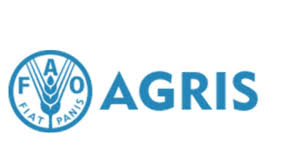USO DE SUBSTRATOS AGROINDUSTRIAIS PARA PRODUÇÃO DE DELTA-ENDOTOXINAS POR BACILLUS THURINGIENSIS
Resumo
Palavras-chave
Texto completo:
PDFReferências
ABDEL-HAMEED, A.; CARLBERG, G.; E1-TAYEB, O. M. Studies on Bacillus thuringiensis H-14 strains isolated in Egypt—III. Selection of media for δ-endotoxin production. World Journal of Microbiology and Biotechnology, v. 6, p. 313-317, 1990. DOI: 10.1007/BF01201303
ADANG, M. J.; CRICKMORE, N.; JURAT-FUENTES, J. L. Diversity of Bacillus thuringiensis crystal toxins and mechanism of action. Advances in Insect Physiology, v. 47, p. 39-87, 2014. DOI: 10.1016/B978-0-12-800197-4.00002-6
ALENCAR, R. B. et al. Alkaline proteases from digestive tract of four tropical fishes. Brazilian Journal of Food Technology, v. 6, p. 279-284, 2003.
ANNAMALAI, N. et al. Optimization, purification and characterization of novel thermostable, haloalkaline, solvent stable protease from Bacillus halodurans CAS6 using marine shellfish wastes: a potential additive for detergent and antioxidant synthesis. Bioprocess Biosyst Eng, v. 36, p. 873–883, 2013. https://doi.org/10.1007/s00449-012-0820-3
BOHOROVA, N. et al. Selection and characterization of Mexican strains of Bacillus thuringiensis active against four major lepidopteran maize pests. Entomophaga, v. 41, n. 2, p. 153-165, 1996. DOI: 10.1007/BF02764243
BOUGATEF, A. et al. Protein hydrolysates from Bluefin Tuna (Thunnus thynnus) heads as influenced by the extent of enzymatic hydrolysis. Biotechnol Bioproc E, v. 17, p. 841–852, 2012. https://doi.org/10.1007/s12257-012-0053-y
BRAR, S. K. et al. Bacillus thuringiensis proteases: production and role in growth, sporulation and synergism. Process Biochemistry, v. 42, p. 773–790, 2007. DOI: 10.1016/j.procbio.2007.01.015
CAILLE, J. et al. Hetero diels−alder-biocatalysis approach for the synthesis of (S)-3-[2-{(Methylsulfonyl) oxy}ethoxy]-4-(triphenylmethoxy)-1-butanol Methanesulfonate, a key intermediate for the synthesis of the PKC inhibitor LY333531. Org. Proc. Res. Dev., v. 6, n. 4, p. 471–476, 2002. https://doi.org/10.1021/op020202a
ELLEUCH, J. et al. Characterisation of novel Bacillus thuringiensis isolates against Aedes aegypti (Diptera: Culicidae) and Ceratitis capitata (Diptera: Tephridae). Journal of Invertebrate Pathology, v. 124, p. 90–97, 2015. DOI: 10.1016/j.jip.2014.11.005
ENNOURI, K. et al. Correlation between delta-endotoxin and proteolytic activities produced by Bacillus thuringiensis var. kurstaki growing in an economic production medium. Biocontrol Science and Technology, v. 23, n. 7, p. 756-767, 2013. DOI: 10.1080/09583157.2013.791364
FOX, P.F. et al. Fundamentals of Cheese Science. 2nd ed. New York: Springer, 2017. 816 p.
FROTA, M. N. L. et al. Palma Forrageira na Alimentação Animal. 1. ed. Teresina: Embrapa Meio-Norte, 2015. 47 p.
IÇGEN, Y.; IÇGEN, B.; OZCENGIZ, G. Regulation of crystal protein biosynthesis by Bacillus thuringiensis: II. Effects of carbon and nitrogen sources. Research in Microbiology, v. 153, p. 605–609, 2002. DOI: 10.1016/s0923-2508(02)01366-9
JISHA, V. N. et al. Biphasic fermentation is an efficient strategy for the overproduction of δ-endotoxin from Bacillus thuringiensis. Appl. Biochem. Biotechnol., v. 175, p.1519-1535, 2015. DOI: 10.1007/s12010-014-1383-3
LAGRANGE, V.; CLARK, D. C. Nutritive and therapeutic aspects of whey proteins. In: DEETH, H. C.; BANSAL, N. Whey Proteins: From Milk to Medicine. London: Academic Press, 2019. p. 549-577.
MELGAR, R.; CAMOZZI, M. E.; FIGUEROA, M. M. Nitrogenados. In:______(Org.) Guía de fertilizantes, enmiendas y productos nutricionales. Buenos Aires: Instituto Nacional de Tecnología Agropecuária, 1999. p. 13-25.
MOUNSEF, J. R. et al. Evaluation of a cereal milling by-product for the low cost production of Bacillus thuringiensis kurstaki in submerged fermentation. European Journal of Biotechnology and Bioscience, v. 1, n. 6, p. 10-16, 2014.
OZCAN, T.; KURDAL, E. The effects of using a starter culture, lipase, and protease enzymes on ripening of Mihalic cheese. Int. J. Dairy Technol., v. 65, p. 585–593, 2012. DOI: 10.1111/j.1471-0307.2012.00868.x
PAN, X. et al. Biosorption and extraction of europium by Bacillus thuringiensis strain. Inorg. Chem. Commun., v. 75, p. 21-24, 2017. DOI: 10.1016/j.inoche.2016.11.012
PRABAKARAN, G.; BALARAMAN, K. Development of a cost-effective medium for the large scale production of Bacillus thuringiensis var. israelensis. Biol. Control, v. 36, p. 288–292, 2006. DOI: 10.1016/j.biocontrol.2005.09.018
RATNAVATHI, C. V.; PATIL, J. V.; CHAVAN, U. D. Sorghum biochemistry: an industrial perspective. London: Academic Press, 2016. 253 p.
RAYMOND, B. et al. Bacillus thuringiensis: an impotent pathogen? Trends Microbiol., v. 18, p. 189–194, 2010. DOI: 10.1016/j.tim.2010.02.006
SCHNEPF, E. et al. Bacillus thuringiensis and its pesticidal crystal proteins. Microbiology and Molecular Biology Reviews, v. 62, p. 775–806, 1998.
SHOJAADDINI, M. et al. Development of a cost effective medium for production of Bacillus thuringiensis bioinsecticide using food barley. Journal of Plant Protection Research, v. 50, n. 1, p. 9-14, 2010. DOI: 10.2478/v10045-010-0002-8
TRACHTENBERG, S.; MAYER, A. M. Composition and properties of Opuntia ficus-indica mucilage. Phytochemistry, v. 20, n. 12, p. 2665-2668, 1981. DOI: 10.1016/0031-9422(81)85263-6
ZGHAL, R. Z. et al. Optimization of bio-insecticide production by Tunisian Bacillus thuringiensis israelensis and its application in the field. Biological Control, v. 124, p. 46-52, 2018. DOI: 10.1016/j.biocontrol.2018.06.002
DOI: https://doi.org/10.12661/pap.2020.007
Métricas do artigo
Metrics powered by PLOS ALM
Apontamentos
- Não há apontamentos.
Pesquisa Agropecuária Pernambucana
ISSN 0100-8501 (impresso)
ISSN 2446-8053 (online)
Instituto Agronômico de Pernambuco (IPA)
Av. General San Martin, 1371
Bongi, Recife, PE, CEP 50761-000
revista.pap@ipa.br

.png)

.png)


